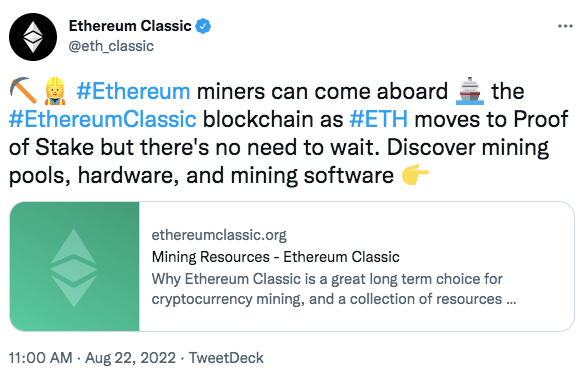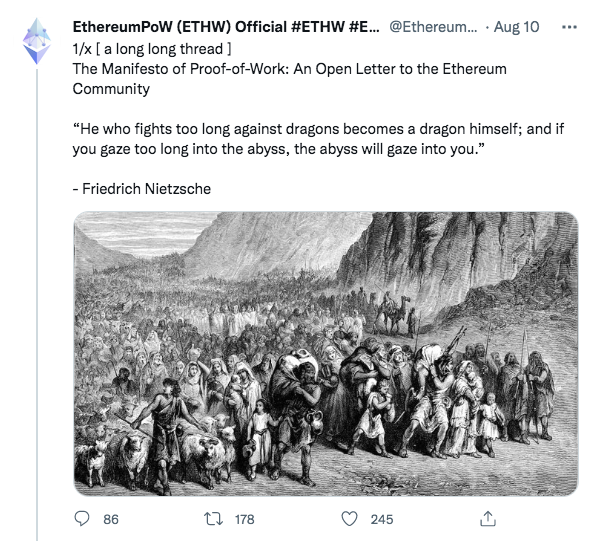Optimism is high for the Ethereum Merge, but not everybody shares the excitement as the slated 19th September date draws near. When ETH switches from PoW to PoS, miners will be put out of business. What these people do next (and where they go) will shape not just the future of ETH but the whole of crypto.
Miners might move elsewhere

Ethereum mining has been incredibly lucrative over the years. It topped Bitcoin mining in 2021 as the industry earned around $18 billion. Miners might simply move their business to other coins, but this comes with problems. Ethereum Classic would be the most obvious choice but it’s nowhere near as profitable. ETC generated just $318 million last year and would need to grow by roughly 5000% to be as profitable as ETH. Coins like Monero and Doge also represent potential offramps but ETC, Monero and Doge combined only managed to generate $1.1 billion last year. Litecoin was a little more viable but still a long, long way behind ETH. It’s worth noting, however, that big capital has been flowing into ETC (including $10 million from Antpool) so we could yet see big movements in that direction.
The hard fork could gain traction

A fork is the most extreme result of the miner exodus. Forking the network to retain POW is the brainchild of Chinese miner Chandler Guo. The forked ETH would retain PoW, keeping miners in business. Guo named it EthereumPOW and the chain’s Twitter account variously quotes Nietzsche and compares the fork to the Israelites leaving Egypt. Despite these statements, Guo admits that “there is still a 90% chance this will not succeed.” That's good news for investors because a successful fork could wreak havoc on ETH’s price. Vitalik decried the fork as a money-making exercise from people who just want to make “a quick buck” and the price has been steadily tanking recently. Still, nobody can really say what will happen to EthereumPOW until after the Merge.
Mining pools could shift to staking

Mining pools share vast amounts of capital and computing power which makes them more flexible than individual miners. There’s evidence to suggest that some of the biggest mining pools will simply divert their immense resources to staking instead of mining. That’s already true for Ethermine (which announced staking back in April). F2Pool (the second biggest mining pool) signalled the end of the mining era mid-way through August. Stakers will be rewarded with high returns post Merge, so this would seem like the most logical (if unspectacular) outcome. The situation is a little more complicated for individuals. Stakers require a minimum of 32 ETH to activate validator software. That’s nothing for big pools but could leave individual miners out in the cold.
Sources
https://twitter.com/EthereumPoW
https://twitter.com/ethermine_org
https://twitter.com/eth_classic


